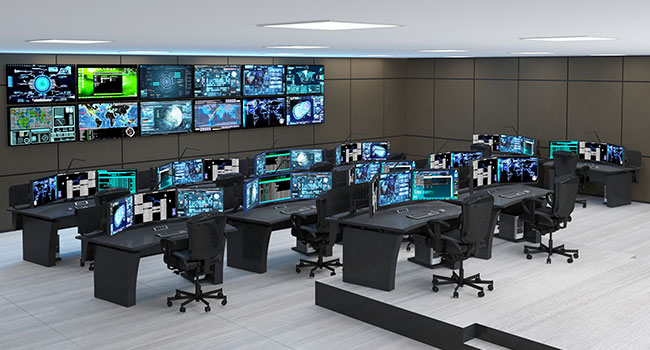
Control Your Room
Selecting the right workstations to ensure employees are healthy, focused and engaged
- By Randy Smith
- Dec 01, 2022
There is an understanding that doing a job right requires the right tools. However, recent years have seen rising awareness that furniture does not merely provide a post from which to do a job. Instead, contributing to successful outcomes requires the right furniture.
From standing desks to balance balls, and ergonomically designed office products, employers are increasingly working to ensure their workstations aren’t merely comfortable, but rather keep employees healthy, focused and engaged as they perform their jobs.
Nowhere is this more important than in a mission-critical control room, such as an emergency dispatch center. Fatigue, distraction and discomfort cause problems in any workplace – but in a control setting, they can mean the difference between success and failure, safety and danger, even life and death.
That is why providing employees with a properly designed work environment is as important as other aspects of the mission. Not only will doing so support workers, it will facilitate better outcomes as it enables them to work more safely and efficiently.
Traditional office furniture has a number of drawbacks in control environments. Most office furniture materials cannot withstand a continuous-use work environment. In most instances, they consist of frames and work surfaces constructed from wood composites, meaning not built for heavy use.
Technical furniture is durable and designed for intensive operational environments. Workstations see use around the clock, 365 days a year. Where traditional office furniture typically is used 2,080 hours annually, control room furniture is used 8,760 hours – more than four times more. Mission-critical furniture must be up to the task; the quality of its materials, surfaces, hardware components and even accessories must perform at a level exceeding the requirements of the average workplace environment.
Technical furniture is best suited for housing and managing large quantities of computer, communications or medical equipment and the associated peripherals.
Designed and manufactured in the context of a critical operational environment, there is strict adherence to human factors and ergonomics. Its furniture frames are made from high-grade steel rather than wood composite, with work surfaces crafted of highly durable materials that can withstand continuous use.
A well-built control room is an extension of the operator, providing optimal support and assistance through purposeful design and advanced technology. Quality, durability, cable management, easy access and ergonomics are all key differentiators between average office furniture and true technical furniture. These factors all play significant roles in minimizing distractions and maximizing focus.
Paying attention can also reduce costs, since when regular office furniture is exposed to atypical use such as 24/7 operation, it will result in premature wear and tear, and require expensive repairs or replacements.
With so much technology placed on or built into technical furniture, it is imperative there be easy access to power sources. Often overlooked, valuable time can be lost trying to add a new piece of technology. Access to outlets must be easy, intuitive and flexible enough that new technology is available in seconds, not minutes or hours.
Traditional office furniture is typically holds a computer, one or two monitors, a communication device and files. Its primary cable management requirements are for keyboards, a mouse and monitors. On the other hand, a continuous workspace has large cable challenges, so technical furniture must be equipped with advanced cable management systems. This helps reduce clutter in the control room, and makes it easier to access and move equipment.
Arguably, the most significant difference between office furniture and technical furniture is ergonomics. Traditional office furniture supports users during a typical eight-hour workday. Technical furniture, on the other hand, is built specifically for 24/7 environments and is engineered to support operators in industries where focus and productivity are critical. Proper ergonomics leads to superior situational awareness, allowing operators to keep their minds in the game with fewer distractions.
Winsted sees furniture as an extension of the human form, and seamlessly integrates the design into any workspace. The company views ergonomic comfort as not just a feature, but as a requirement. For employers developing or updating a control room, Winsted assists with assessing room size, defining technical needs such as monitors and table space, engineering workspaces, installation and more. A user-friendly program called Winsted Equipment Layout Software (WELS) provides customers with assessment and design tools that let control room managers quickly create solutions that meets their needs.
Designing a control room is more than for day-to-day operations. Proper knowledge, materials and design can mean the difference between a mission’s success and failure – and when that mission is critical, it is not enough to settle for an ordinary approach and hope for the best. Creating an ideal control environment can allow for full focus on that mission and allow operators to make the maximum contributions to its success.
This article originally appeared in the November / December 2022 issue of Security Today.